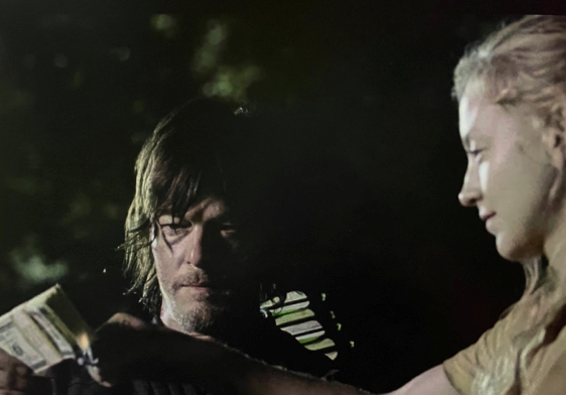Butch Orientations: Locating Queerness in Daryl Dixon from The Walking Dead
Main Article Content
Abstract
American post-apocalyptic horror series The Walking Dead (2010-2022) has been accused of both killing off out queer characters and explicitly explores a world that recreates fascist masculinity (Gencarella, 2016) and heteropatriarchal gender roles (Sugg, 2015). However, the fan favorite Daryl Dixon (Norman Reedus) presents an opportunity for queer spatiality which disrupts the dichotomy of queer/heterosexual. Dixon follows a queer narrative trajectory, largely outside of heterosexual relationships and estranged from his family of origin. The show’s treatment of the character reflects queer masculinities which develop outside of heteropatriarchy, based in a queer process of becoming, frequently seen among AFAB butch lesbians, non-binary, and transmasculine folx. Through his proximity to out queer characters on screen and role as the protector of the group, Daryl is spatially oriented (Bradbury-Rance, 2019;Ahmed, 2006) both within the group and his own body in varying degrees of distancing.
Dixon’s role outside of a dominant gendered framework as well as his tendency to distrust models of collectivist structures which replicate American capitalist society give primacy to a queer anti-establishment positionality. The privacy to which Dixon’s sex life has been shielded from view highlights the ways queer readings have influenced the show and present Dixon with queerer affect. For example, the fandom around Dixon representing an asexual or gay character caused the writers to avoid showing Daryl kiss character Leah on screen in season 10 (Stone, 2021), instead foregrounding looks and close up shots by a fireplace which are typically reserved for reading lesbian desire on screen (Bradbury-Rance, 2019).
Article Details

This work is licensed under a Creative Commons Attribution 4.0 International License.
Authors who publish with this journal agree to the following terms:
- Authors retain copyright and grant the journal right of first publication with the work simultaneously licensed under a Creative Commons Attribution License that allows others to share the work with an acknowledgement of the work's authorship and initial publication in this journal.
- Authors are able to enter into separate, additional contractual arrangements for the non-exclusive distribution of the journal's published version of the work (e.g., post it to an institutional repository or publish it in a book), with an acknowledgement of its initial publication in this journal.
- Authors are permitted and encouraged to post their work online (e.g., in institutional repositories or on their website) prior to and during the submission process, as it can lead to productive exchanges, as well as earlier and greater citation of published work (See The Effect of Open Access).

